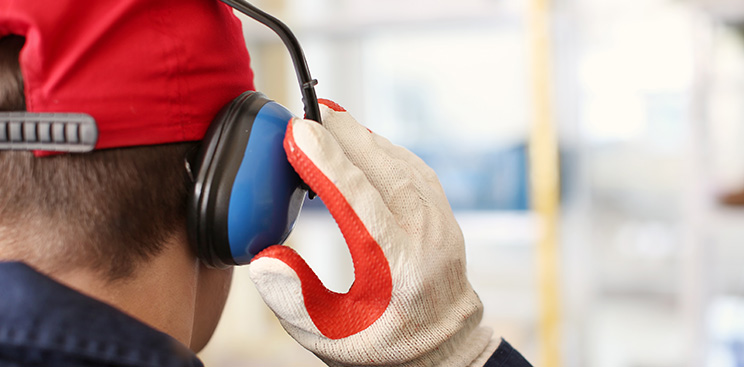Hearing Damage in the Workplace

When we think of injuries sustained in the workplace, rarely do we think of hearing loss. However, the Center for Disease Control reported that in America, around 22 million employees experience unsafe levels of sound in their work environments. This makes hearing loss the number one injury sustained in the workplace!
Sound is measured in decibels (dB). Any level of sound that exceeds 85dB is considered unsafe, according to the National Institute for Occupational Safety and Health (NIOSH). Just to give you an example of what 85dB sounds like, take a walk outside onto a street that is busy with traffic.
Certain vocational settings report higher levels of noise than others. If you are concerned whether your workplace is too loud, just take note of how many times a day you need to raise your voice in order to be heard by your co-workers who are standing close by.
Those working in the manufacturing industry have the highest risk of hearing damage, with 82% of employees reporting some form of hearing loss in the year 2007. Other high risk vocational settings include the mining industry, construction, airline traffic controllers, mechanics, and even bartenders.
Signs of hearing loss can begin with a ringing sensation in the ears. If you experience any buzzing or humming noise in the ears after a loud day at work, you may be experiencing occupational hearing damage.
You can easily examine whether the noise levels at your workplace are safe, using a sound meter that examines the decibels of sound emitting from your workplace. This meter was created by NIOSH and can be downloaded using any smartphone. If the measured sound level exceeds 85dB and you are not provided with any protective gear to protect your hearing, make a request with human resources.
Many industries are well aware of the loud levels of sound and already provide ear protection. Make sure you always wear your protective gear during work hours to prevent hearing damage. Prevention is always better than the cure when it comes to hearing loss, since loss of hearing is irreversible.
For those who already have hearing loss, the Americans Disabilities Act will help to make special allowances to cater for your hearing requirements. You will also be protected from any type of harassment you may face in the workplace due to your hearing disability.
Hearing loss is taken very seriously these days, which is why each company has a Hearing Conservation Program if they are following the 1981 laws executed by OSHA. You have the right to be exposed to safe work environments, which includes safe levels of sound. If higher levels of sound are necessary, companies are required to provide protective hearing gear free of cost to all employees.
If you work in high-risk environments, make sure you get your hearing tested annually to detect any early signs of hearing loss. You can prevent hearing damage by diagnosing hearing loss at its early stages.
You may have sustained hearing loss at your workplace without even being aware of it. If you suspect this is the case, make sure you get your hearing tested by a neutral hearing care specialist. These tests are fast and painless.
In case you require hearing aids to rectify your hearing loss that resulted from work (where protective gear was not provided despite high levels of sound), you can claim for compensation from your workplace. In extreme cases if your workplace is non-cooperative, you can file a case for personal injury sustained in the workplace.
Make sure you take the necessary steps needed to protect your ears whenever you expose yourself to unsafe levels of sound. You can use applications available on your smartphone to examine the sound levels at work. If you feel that the noises at your workplace are too loud, make sure you bring this up with your employer. It is never too late to start protecting your ears so that you can continue to enjoy your world of sound for all your years to come.
